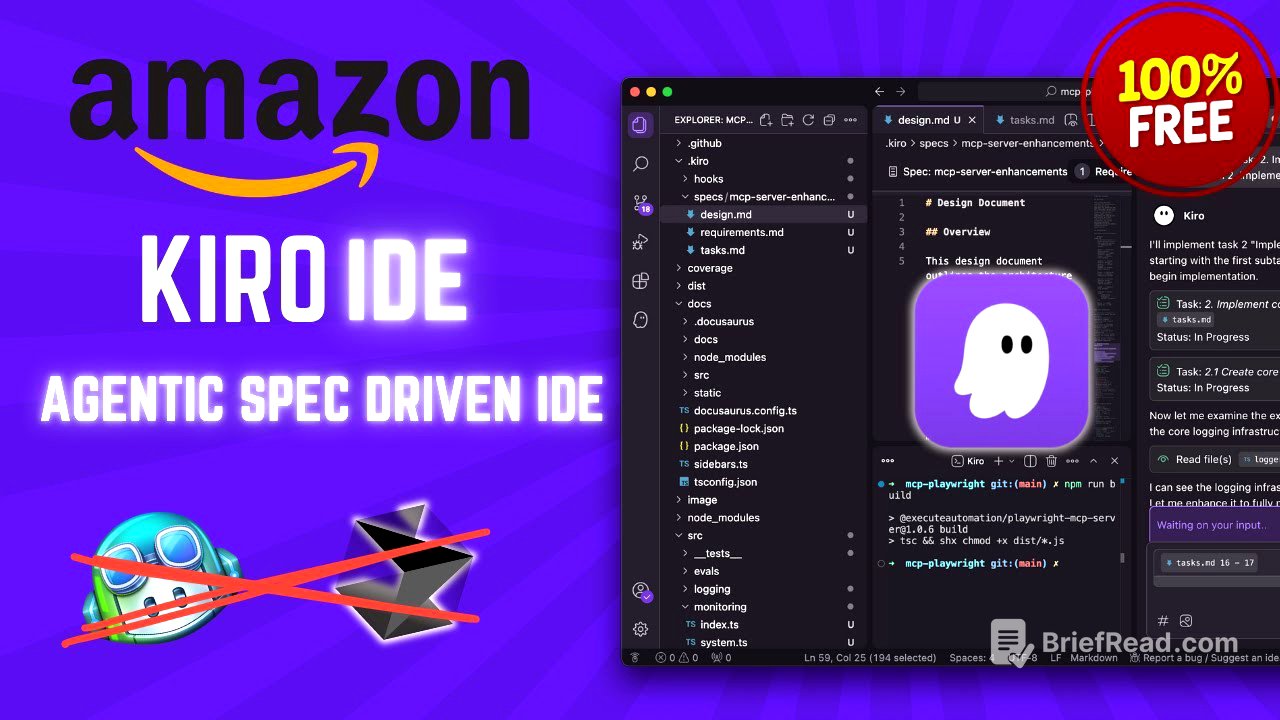TLDR;
This video introduces Kiro, Amazon's new AI IDE, which competes with tools like Cursor IDE and GitHub Copilot. Kiro emphasizes spec-driven development and features like agent hooks for automated documentation updates. The presenter highlights Kiro's ability to create requirement documents, design architectures, and manage task lists, offering more granular control over the coding process compared to other AI IDEs.
- Kiro is an AI IDE developed by Amazon, competing with tools like Cursor and GitHub Copilot.
- It focuses on spec-driven development and includes agent hooks for automated tasks.
- Kiro offers features like requirement documentation, architectural design, and task list management.
Introduction [0:00]
The video introduces Kiro, Amazon's AI IDE, positioning it as a competitor to existing tools like Cursor IDE, Vinserf, and GitHub Copilot. Kiro distinguishes itself through AI coding with spec-driven development and agent hooks. The presenter expresses excitement about Kiro's capabilities and promises a quick demonstration of its power.
Overview of Kiro Demo [3:50]
The presenter shares his experience using Kiro with his MCP server project on GitHub, which was initially developed with hand coding and later streamlined with Cursor IDE. Kiro has enhanced the development process further. He prompted Kiro to analyze the MCP server and identify missing industry-standard features like SSE support.
Kiro Specs [4:00]
Kiro created a requirement documentation, similar to what Cursor IDE can do, but with the added benefit of storing everything in a memory-like fashion. It then moved to the design phase, generating a mermaid diagram representing a high-level architectural diagram. Kiro also provided code snippets in TypeScript for each requirement, such as components for an SSE server, logging system, rate limiter, and monitoring system. Following the design phase, Kiro created a task list, mapping tasks to requirements, similar to requirement traceability. Users can navigate to the chat window to ask questions or refine specifications. By using command L, users can run a specification, improve it, and update tasks accordingly. The presenter initiates a task to implement a comprehensive logging system, showcasing Kiro's ability to manage tasks in progress and provide clear specifications for each prompt.
Kiro Agent Hooks [8:58]
The presenter highlights Kiro's agent hooks, which automatically update project documentation in the readme file and docs folder whenever changes are made to TypeScript source files. This feature ensures that documentation remains synchronized with the code. Agent hooks can also be set up to manage versioning, diagrams, requirements, and other configurations, reducing the need for manual updates. The presenter mentions the availability of MCP server features within Kiro, allowing users to configure and utilize GitHub, Playwright, or database MCP servers.









